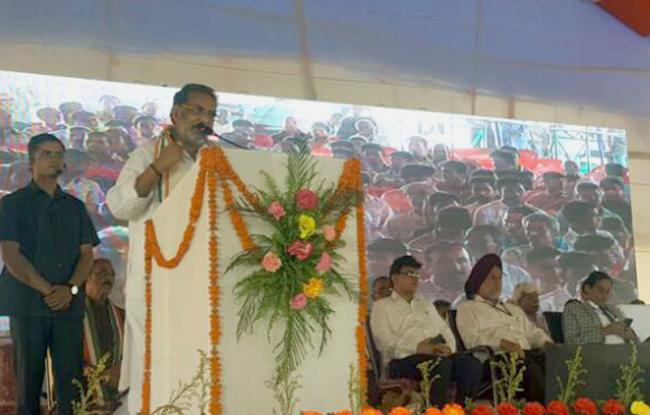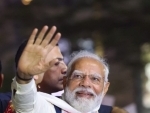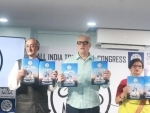
Farmers were being exploited and oppressed in different ways under Khurki and Teenkathiya systems, says Radha Mohan Singh
The Minister of Agriculture said it today while addressing a gathering at National Farmer Fair in Champaran.
He further said that the innocent, disarmed farmers raised their voice against the atrocities, exploitations, oppression and extortion of the Britishers and forced them to abolish the system through Satyagraha.
The Minister added that the Neeley Britishers had confiscated more than one lakh crore fertile lands and set up their kothis there. Farmers were being exploited and oppressed in different ways by Neeley Britishers under Khurki and Teenkathiya systems. Under Khurki system, the British planters used to pay some money to the farmers (Raiyyat) by mortgaging their lands and houses and compelling them to sow indigo.
The Minister said that the British administration and Jamindar had established “Teen Kahitya” system under which teen katha land out of one bigha was reserved for indigo (Neel) farming. The farmers had to bear the cost of indigo farming and the British planters used to keep the yields without compensating the farmers.
Not only this, they were even exploited through the various taxes levied on them. Thousands of landless labourers and poor farmers were forced to sow indigo instead of other crops. Before 1867, 5 kathiya land system was reserved for indigo farming.
The farmers were forced to pay several taxes while delivering indigo into the factories such as Bapahi-Putahi, Marvah and Sagaura. Despite taxes, the factories used to play very low prices for the indigo and the farmers were never paid their dues in time.
The Minister said that in the latter half of the 19th century more than 47000-acre land was sown with indigo. In 1914, the indigo farming was limited to 8100 acres due to stiff competition from the best quality German indigo.
In the aftermath of First World War, the British planters stopped importing indigo from Germany which resulted in an increased demand for indigo and after that Champaran gained importance for indigo farming.
The government and the landlords expanded indigo farming.
However, the British planters used to reap the benefit and the farmer's condition remained the same.
The Minister said that Gandhiji reached Motihari on April 15, 1917. Next day, when Gandhi was ready to leave for Champaran, he received a government order to be present before the SDO of Motihari.
The order also stated that Gandhiji should leave the area immediately and go somewhere else. But Gandhiji disobeyed the order and continued his journey to Champaran.
He was prosecuted for the violation of the order. After having reached Champaran Gandhiji informed the District Collector in writing that he will not leave Champaran until the issues related to indigo farming are not looked into.
Thus, Gandhiji presented a burning example of civil disobedience movement. Gandhiji made such an impression on the government that they assured him full cooperation. Babu Rajendra Prasad, Acharya J.P Kriplani, Babu Brij Kishor Prasad and Maulana Mazrul Haq joined Gandhiji to resolve the issues of the farmers of Champaran.
The Minister of Agriculture said that in 1907, Sheikh Gulab and Sital Rai had raised their voice against the indigo farming.
However, Gandhiji made farmers exploitation a part of freedom movement and inspired the farmers to revolt against British. Gandhiji’s Satyagraha moment helped in abolishing indigo farming and after that farmers started growing sugarcane and paddy in their fields.
Support Our Journalism
We cannot do without you.. your contribution supports unbiased journalism
IBNS is not driven by any ism- not wokeism, not racism, not skewed secularism, not hyper right-wing or left liberal ideals, nor by any hardline religious beliefs or hyper nationalism. We want to serve you good old objective news, as they are. We do not judge or preach. We let people decide for themselves. We only try to present factual and well-sourced news.







